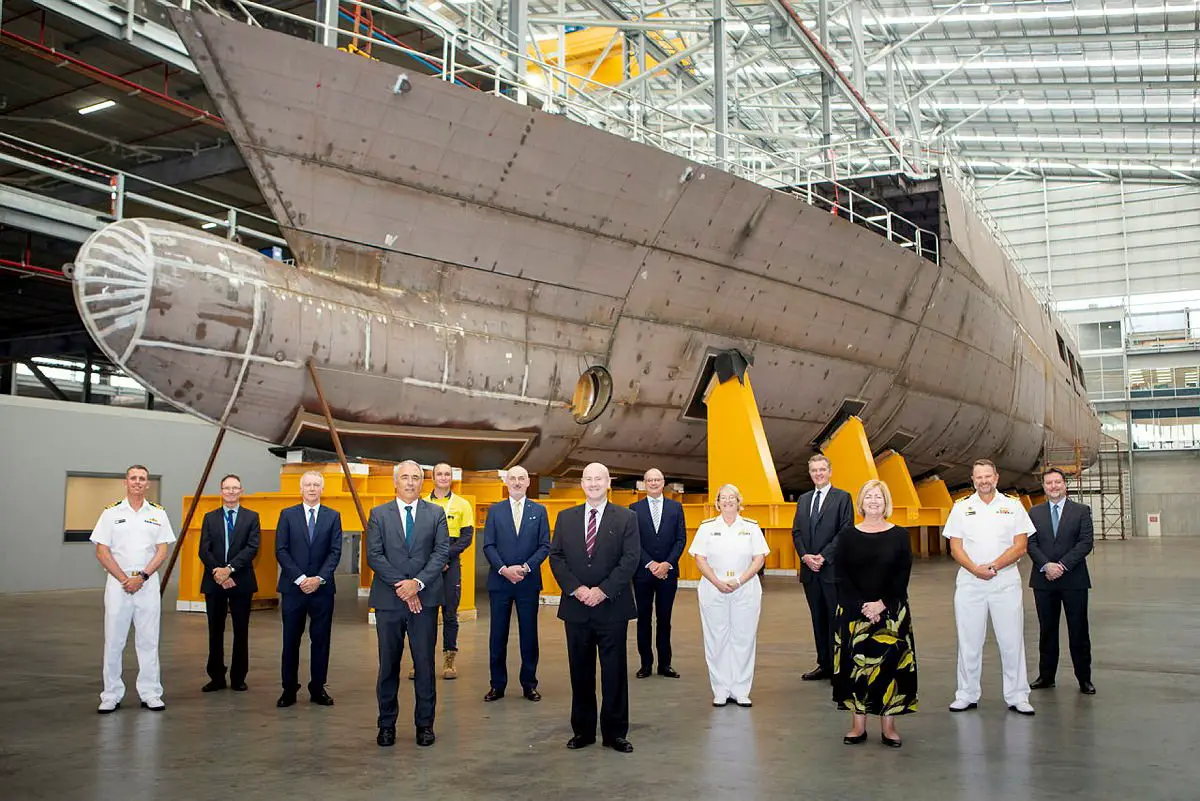According to a press release published by Australian secretary of defence on March 5, 2021, Mr Greg Moriarty, together with a large contingent of Defence senior leaders, launched the Arafura Class Offshore Patrol Vessel (OPV) Enterprise and opened the OPV System Program Office at the Henderson maritime precinct.
According to a press release published by Australian secretary of defence on March 5, 2021, Mr Greg Moriarty, together with a large contingent of Defence senior leaders, launched the Arafura Class Offshore Patrol Vessel (OPV) Enterprise and opened the OPV System Program Office at the Henderson maritime precinct.
Follow Navy Recognition on Google News at this link
 "Pilbara", which is currently under construction at the Henderson Shipyard in Australia (Picture source )
"Pilbara", which is currently under construction at the Henderson Shipyard in Australia (Picture source )
The OPV Enterprise brings together Commonwealth and defence industry teams under one roof, to build and sustain the Royal Australian Navy’s new Arafura Class OPVs, the first two of which are being constructed in South Australia, with the remaining 10 vessels to be built in Western Australia.
Head Maritime Systems, Rear Admiral Wendy Malcolm said the establishment of the OPV Enterprise represented an important milestone under the Continuous Shipbuilding Plan.
The Arafura Class OPVs, which replace the Armidale and Cape Class patrol boats, will be the Australian Defence Force’s main asset for maritime patrol and response duties and will primarily undertake constabulary missions.
The Arafura-class is based on the Lürssen-designed Darussalam-class, operated by the Royal Brunei Navy. Each vessel has a gross displacement of 1,640 tonnes, and measures 80 metres (260 ft) long, with a beam of 13 metres (43 ft) and a draft of 4 metres (13 ft). Propulsion power is from two MTU 16V diesel engines rated at 4,440 kilowatts (5,950 hp) each, which drive variable pitch propellers and give a top speed of 22 knots (25 mph), and shipboard electrical power is generated by MAN diesel engines. The ship's range is about 4,000 nautical miles (7,400 km), with an endurance of 21 days. The standard crew complement is 40 sailors, though up to 20 more can be berthed if required. The ships will be deployed with empty space available to install container-mounted systems such as aircraft support and sensors; if fully utilized, the gross displacement could increase to 1,800 tonnes.
Shipboard armament consists of a single 40 mm gun and two 12.7 mm guns. Each vessel carries two 8.5-metre (28 ft) rigid inflatable boats and a single 10-metre (33 ft) boat, which are intended as the primary means of deploying offensive force in the ships' border patrol role. A single unmanned aerial vehicle is carried and deployed from an open utility deck. Two separate electro-optic targeting systems and three radars are installed and managed by the Saab 9LV system. In order to allow the ships to operate in conjunction with allied international forces, each ship is equipped with a unique electronic identifier transponder that allows for communication via the Link 16 network.







